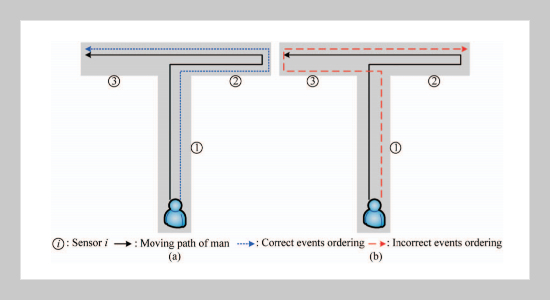REFERENCES
- [1] Akyildiz, I. F. and Kasimoglu, I. H., Wireless Sensor and Actor Networks: Research Challenges. Ad Hoc Networks, Vol. 2, No. 4, pp. 351367 (2004). doi: 10. 1016/j.adhoc.2004.04.003
- [2] Munir, M. F. and Eurecom, I., Wireless Sensor and Sensor-Actuator Networks Research Trends, Protocols, and Applications, 2005 Networking and Communications Conference, 2005 May 13; Lahore, Pakistani, IEEE; pp. 66 (2008). doi: 10.1109/INCC.2008.4562673
- [3] Melodia, T., Pompili, D. and Akyildiz, I. F., A Communication Architecture for Mobile Wireless Sensor and Actor Networks, 2006 Sensor and Ad Hoc Communications and Networks Conference, 2006 September 28; Reston, VA, IEEE, pp. 109118 (2006). doi: 10.1109/SAHCN.2006.288415
- [4] Melodia, T., Pompili, D., Gungor, V. C. and Akyildiz, I. F., “Communication and Coordination in Wireless Sensor and Actor Networks,” IEEE Transaction on Mobile Computing, Vol. 6, No. 10, pp. 11161129 (2007). doi: 10.1109/TMC.2007.1009
- [5] Boukerche, A., Silva, F. H. S., Araujo, R. B. and Pazzi, R. W. N., A Low Latency and Energy Aware Event Ordering Algorithm for Wireless Actor and Sensor Networks, 2005 Modeling Analysis and Simulation of Wireless and Mobile Systems Conference, 2005 October 1013; Quebec, Canada, ACM, pp. 111117 (2005). doi: 10.1145/1089444.1089465
- [6] Boukerche, A. and Martirosyan, A., An Efficient Algorithm for Preserving Events’ Temporal Relationships in Wireless Sensor Actor Networks, 2007 Local Computer Networks Conference, 2007 October 1518, Dublin, IEEE, pp. 771780 (2007). doi: 10.1109/LCN.2007. 153
- [7] Boukerche, A., Araujo, R. B. and Silva, F. H. S., “An Efficient Event Ordering Algorithm that Extends the Lifetime of Wireless Actor and Sensor Networks,” Performance Evaluation, Vol. 64, No. 5, pp. 480494 (2007). doi: 10.1016/j.peva.2006.08.009
- [8] Boukerche, A., Araujo, R. B., Silva, F. H. S. and Villas, L., “Wireless Sensor and Actor Networks Context Interpretation for the Emergency Preparedness Class of Applications,” Computer Communications, Vol. 30, No. 13, pp. 25932602 (2007). doi: 10.1016/j.comcom. 2007.05.053
- [9] Lamport, L., “Time, Clocks and the Ordering of Events in a Distributed System,” Communications of the ACM, Vol. 21, No. 7, pp. 558565 (1978). doi: 10.1145/359545.359563
- [10] Samani, M. M. and Sloman, M., “GEM: A Generalized Event Monitoring Language for Distributed Systems,” Distributed Systems Engineering Journal, Vol. 4, No. 2, pp. 96108 (1997). doi: 10.1088/0967-1846/4/2/004
- [11] Raynal, M., Schiper, A. and Toueg, S., “The Causal Ordering Abstraction and a Simple Way to Implement It,” Information Processing Letters, Vol. 39, No. 6, pp. 343350 (1991). doi: 10.1016/0020-0190(91)90008-6
- [12] Romer, K., Temporal Message Ordering in Wireless Sensor Networks, 2003 Ad-Hoc Networks Conference, 2003 June 2527; Mahdia, Tunisia, IFIP, pp. 131142 (2003).
- [13] Boukerche, A., Pazzi, R. N. and Araujo, R. B., A Fast and Reliable Protocol for Wireless Sensor Networks in Critical Conditions Monitoring Applications, 2004 Analysis and Simulation of Wireless and Mobile Systems Conference, 2004 October 46; Venice, Italy, ACM, pp. 157164 (2004). doi: 10.1145/1023663. 1023692
- [14] Tuan, C.-C. and Wu, Y.-C., “Event Ordering by Double Confirmation in Wireless Sensor and Actor Networks,” IEEE Sensors Journal, Vol. 11, No. 3, pp. 829836 (2011). doi: 10.1109/JSEN.2010.2085431
- [15] Tuan, C.-C. and Wu, Y.-C., “Coverage and Connectivity Aware Clustering Algorithm within k-Hops in Wireless Sensor and Actor Networks,” Science China Information Sciences, Vol. 57, No. 6, pp. 120136 (2014). doi: 10.1007/s11432-013-5022-3
- [16] Mallapur, S. V. and Patil, S. R., “Survery on Simulations Tools for Mobile Ad-Hoc Networks,” International Journal of Computer Networks and Wireless Communications, Vol. 2, No. 2, pp. 241248 (2012).
- [17] Abedi, R. H., Aslam, N. and Ghani, S., Fault Tolerance Analysis of Heterogeneous Wireless Heterogeneous Sensor Network, 2011 Electrical and Computer Engineering Conference, 2011 Niagara Falls, ON, IEEE, pp. 175179 (2011). doi: 10.1109/CCECE.2011.603 0433









